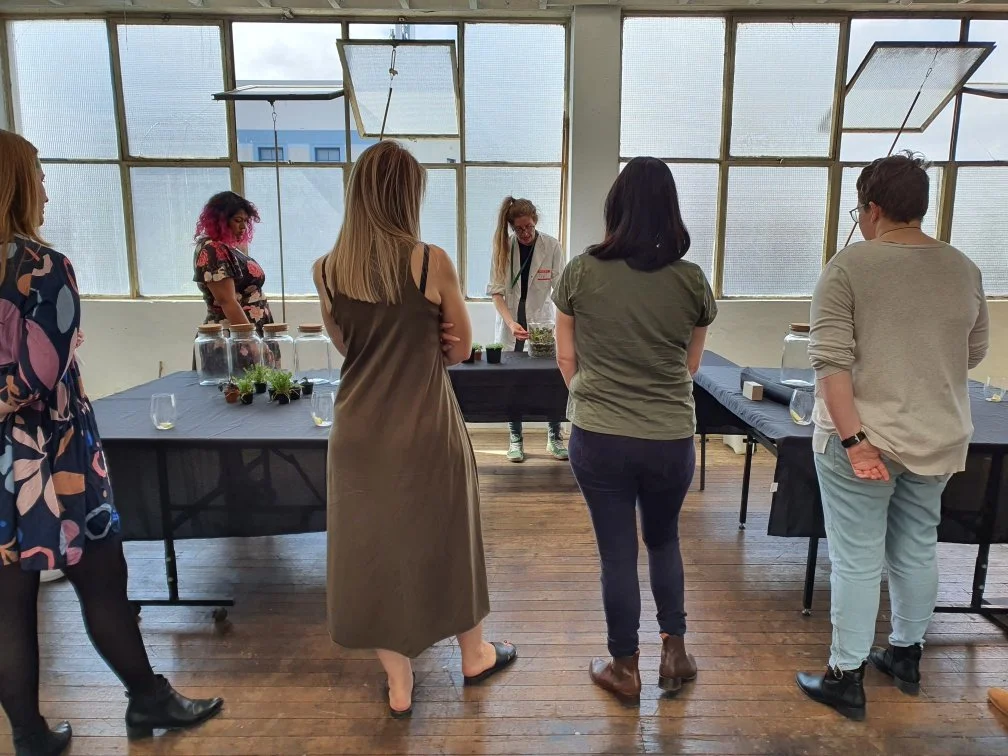Uninvited Guests: Dealing with Insects and Bugs and Infestations in Indoor House Plants
The Plant Doctor is a big nerd who loves sharing the art of indoor plant care. Greenery is not only beautiful, but extremely good for our health and wellbeing. These blog posts are passionately written to help people learn more about plants.
If the blog below inspires you to learn even more, you can choose the way you like most: you can read more indoor plant blogs (click here), join a public workshop (click here), have your own private workshop (click here) or watch online videos (click here).
Now let’s get started!
Indoor house plants bring a touch of nature and serenity to our living spaces, purifying the air and beautifying our homes. However, maintaining healthy indoor plants can sometimes be challenging due to the presence of insects and bugs that can infest and harm our green companions.
In this blog post, we will explore the most common indoor house plant insects and bugs, their impact on plant health, and effective strategies for prevention and control, ensuring your indoor garden thrives insect-free.
Common Indoor Plant Insects and Bugs
a. Aphids:
These tiny, soft-bodied insects come in various colors and can quickly multiply, infesting new growth and tender plant parts. Aphids feed on plant sap, causing stunted growth and deformed leaves.
Pesky aphids!
b. Spider Mites:
Almost microscopic, spider mites are arachnids that form webs on the undersides of leaves. They feed on plant cells, leading to yellowing leaves and weakened plants.
Spider mites!
c. Whiteflies:
Whiteflies are small, flying insects that congregate on the undersides of leaves, sucking plant sap and causing yellowing and wilting.
Spider mites on a poor indoor plant.
d. Mealybugs:
These cottony, waxy insects attach themselves to stems and leaves, draining plant sap and secreting honeydew that attracts sooty mold.
Mealybugs gone wild.
e. Fungus Gnats:
Often seen buzzing around plants, fungus gnats lay their eggs in moist soil. The larvae feed on organic matter and plant roots, potentially causing root damage.
A fungus gnat infection.
A fungus gnat up close!
Impact on Plant Health
Indoor plant insects and bugs can have a detrimental impact on plant health, hindering growth, and even leading to plant death if not addressed promptly. The common signs of infestation include:
Yellowing or browning of leaves
Wilting or drooping foliage
Stunted growth and distorted leaves
Presence of webs or sticky residue on leaves
Visible insects on plant surfaces or in the soil
Neglecting to address these issues can result in weakened plants that are more susceptible to diseases and other stressors.
Poor sick baby plant.
Prevention Strategies
Preventing insect infestations in indoor house plants is often more manageable than trying to control them after they appear. Here are some preventive measures:
a. Be aware of a common indoor plant myth!
Quarantining New Plants:
Some people believe bugs can jump from on plant to another, but over The Plant Doctor’s extensive plant experience, they’ve only seen bugs infect other unwell plants.
A healthy plant next to a sick one, will not be infected.
b. Inspect Regularly:
Routinely inspect your plants, especially the undersides of leaves, for any signs of pests or their eggs.
c. Maintain Plant Health:
Healthy plants are more resilient to pests. Ensure your plants receive adequate light, proper watering, and appropriate fertilization.
d. Use Good Soil:
When repotting or propagating plants, use good potting soil to minimize the risk of introducing pests.
If you don’t know how to pick good soil, come along to an Indoor House Plants 101 workshop with The Plant Doctor. Or check our online videos!
e. Encourage Natural Predators:
A very fun, and unknown technique, is to consider introducing beneficial insects,
such as ladybugs and predatory mites, that feed on common pests!
For example, if your indoor plants have bugs, but you know you have ladybugs outside,
put your indoor plant outside (in indirect light) for the ladybugs to feast!
The cutest indoor plant protectors! Ladybugs!
Control and Treatment Options
When pests have already infested your indoor house plants, it's essential to take action promptly. Here are some effective control and treatment options:
a. Pruning: Trim and remove heavily infested plant parts to prevent the pests from spreading.
b. Neem Oil: Neem oil is a natural insecticide that can be effective against a wide range of pests. Dilute it in water and apply it to affected areas.
c. Insecticidal Soap: Commercial insecticidal soaps are safe for indoor plants and can effectively control soft-bodied insects like aphids and whiteflies.
d. Horticultural Oil: Horticultural oils suffocate pests and their eggs, making them an eco-friendly option for controlling insects.
e. Sticky Traps: Place yellow sticky traps near plants to catch flying insects like whiteflies and fungus gnats.
Another ladybug pic! Because they are the cutest!
As indoor gardeners, encountering insects and bugs in our house plants is a common challenge. However, with proper preventive measures and timely action, we can ensure that our green havens remain thriving, pest-free sanctuaries. Regular inspections, maintaining plant health, and using safe control methods will help keep unwanted guests at bay, allowing us to enjoy the beauty and benefits of indoor house plants to the fullest. Remember that a vigilant and caring approach is the key to maintaining a healthy and vibrant indoor garden.
Happy gardening!
Want to learn more about indoor house plants?
Have Your Own Private Workshop
Read Blogs
Join A Public Workshop
Watch Online Videos






















